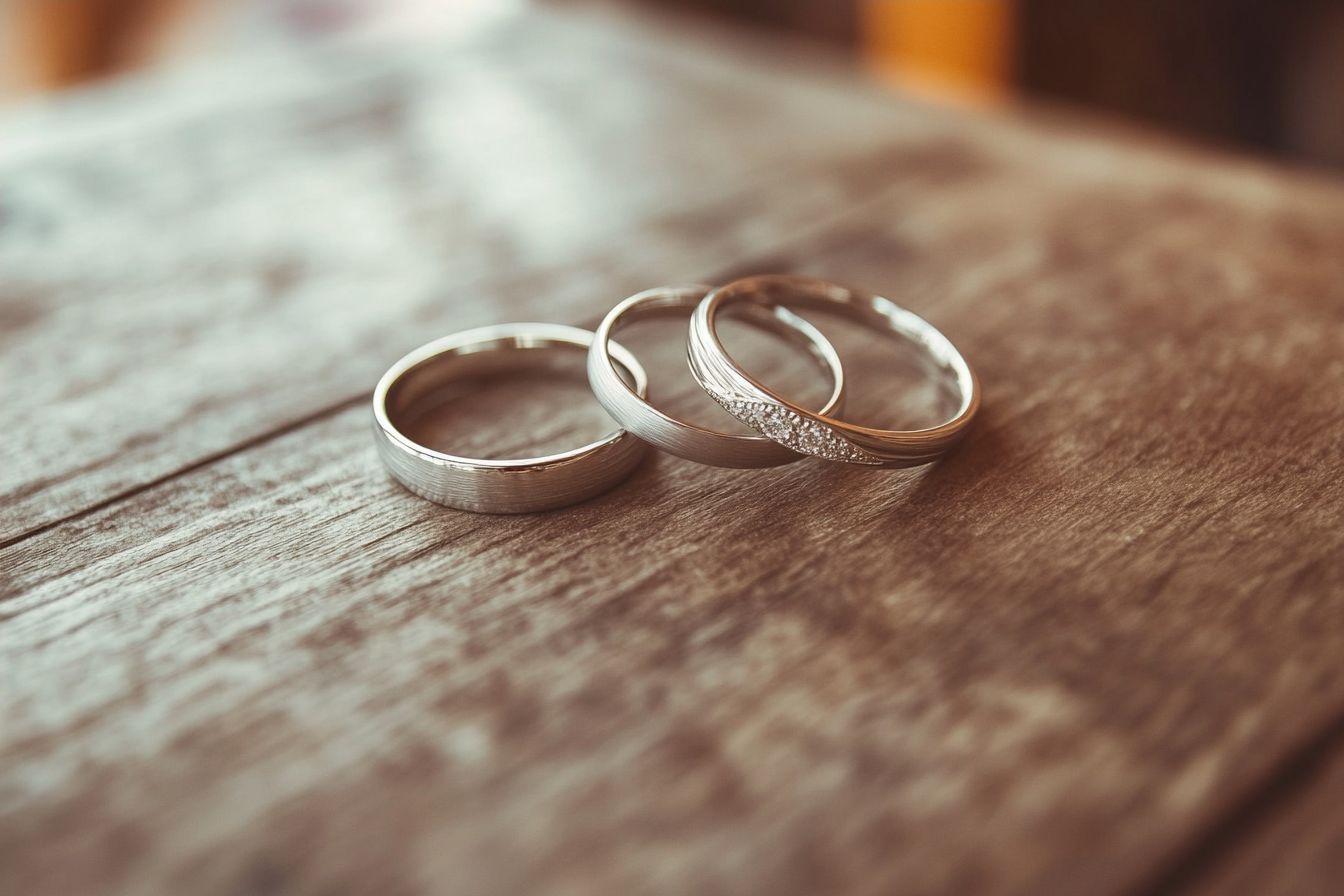Types Of Wedding Rings Explained
Wedding rings come in many forms, from plain bands to detailed designs with stones or patterns. Each type has its own look and meaning, giving couples choices that fit their style and traditions. In this article, you will learn about the main types of wedding rings, including classic gold, modern platinum, and rings with diamonds or other details. The guide also explains how these rings are used in different settings and why they are an important part of marriage traditions across the world.

Understanding Wedding Ring Materials
Wedding rings come in various precious metals, each offering distinct characteristics. The material you choose affects not only the ring’s appearance but also its durability, maintenance requirements, and price point. Traditional metals remain popular, though contemporary alternatives have gained significant traction in recent years.
Gold wedding rings represent the classic choice for many couples. Available in yellow, white, and rose variations, gold offers versatility and timeless appeal. Yellow gold provides a traditional warm lustre, white gold delivers a modern silvery finish, and rose gold presents a romantic pinkish hue. Gold purity is measured in karats, with 18k containing 75% pure gold and 14k containing 58.3%. Higher karat gold is softer and more prone to scratches, whilst lower karat gold offers greater durability for everyday wear.
Platinum wedding rings have become increasingly sought after for their exceptional durability and natural white sheen. This dense metal resists tarnishing and maintains its colour without requiring rhodium plating, unlike white gold. Platinum rings typically contain 90-95% pure platinum, making them hypoallergenic and ideal for those with sensitive skin. The metal’s weight gives rings a substantial, luxurious feel, though this premium material commands higher prices than gold alternatives.
Exploring Ring Styles and Designs
Beyond material selection, wedding rings vary considerably in style and design. Plain bands offer understated elegance with smooth, unadorned surfaces that appeal to those preferring minimalist aesthetics. These timeless designs work well for individuals whose professions or lifestyles require practical, low-maintenance jewellery.
Textured and patterned bands incorporate surface treatments such as hammering, brushing, or engraving to create visual interest. Milgrain detailing adds tiny beaded edges for vintage appeal, whilst Celtic knots and other cultural motifs allow couples to honour heritage. Two-tone designs combine different metal colours in a single band, creating striking contrasts that suit contemporary tastes.
Diamond wedding rings elevate traditional bands with gemstone embellishments. Channel-set designs feature diamonds nestled within the band’s metal, offering protection whilst maximising sparkle. Pavé settings use tiny diamonds set closely together across the ring’s surface, creating continuous brilliance. Eternity bands showcase diamonds encircling the entire circumference, symbolising endless love, though half-eternity versions feature stones only across the visible top portion for comfort and practicality.
Matching Sets and Coordination
Many couples choose coordinating wedding ring sets that complement each other whilst reflecting individual preferences. Matching sets feature identical designs in appropriate sizes, creating visual harmony when hands are placed together. Some prefer complementary rather than identical rings, selecting bands that share design elements such as metal type, finish, or accent stones whilst maintaining distinct characteristics.
Engagement ring coordination presents another consideration. Wedding bands should sit comfortably alongside engagement rings without gaps or awkward positioning. Curved or contoured wedding bands are specifically shaped to nestle against engagement ring settings, whilst straight bands work well with solitaire or bezel-set engagement rings. Some jewellers offer bridal sets designed as cohesive units, ensuring perfect alignment and aesthetic flow.
Alternative Metal Options
Contemporary couples increasingly explore alternative metals beyond traditional precious options. Titanium rings offer exceptional strength and lightweight comfort at accessible price points. This corrosion-resistant metal suits active lifestyles, though resizing proves difficult due to its hardness. Tungsten carbide provides scratch-resistant durability with substantial weight, available in various finishes from polished to matte. However, tungsten’s brittleness means it can shatter under extreme impact.
Stainless steel presents an affordable, hypoallergenic option with good durability and modern appeal. Cobalt chrome combines the white lustre of platinum with enhanced scratch resistance at moderate costs. These alternative metals particularly appeal to those seeking practical, budget-conscious options or individuals working in environments where precious metal rings might sustain damage.
Customisation and Personalisation
Personalised touches transform wedding rings into unique expressions of love. Engraving allows couples to inscribe meaningful dates, initials, coordinates, or short messages inside their bands. Some choose fingerprint engravings, capturing the actual fingerprint of their partner as a deeply personal touch. Birthstone accents add colour and significance, whilst custom designs enable complete creative control over every aspect from metal selection to stone placement.
Bespoke jewellers work with couples to create entirely original designs, though custom work requires longer lead times and higher budgets than ready-made options. Semi-custom approaches allow modification of existing designs, offering personalisation whilst maintaining more accessible pricing and quicker turnaround times.
Practical Considerations for Selection
When selecting wedding rings, practical factors deserve careful attention alongside aesthetic preferences. Comfort fit bands feature rounded interior edges that slide on easily and feel more comfortable during extended wear compared to flat interior designs. Ring width affects both appearance and comfort, with wider bands making bolder statements but potentially feeling restrictive to those unaccustomed to wearing rings.
Lifestyle compatibility ensures rings withstand daily activities. Those working with their hands might prefer lower-profile designs without protruding stones that could catch on materials. Metal hardness affects scratch resistance, with platinum and tungsten showing fewer visible marks than softer gold alloys. Maintenance requirements vary, with some metals requiring periodic professional cleaning or rhodium replating to maintain optimal appearance.
Budget planning should account for both rings if purchasing as a couple, with costs varying dramatically based on metal choice, design complexity, and gemstone inclusion. Setting realistic expectations and prioritising must-have features over nice-to-have elements helps couples find rings that satisfy both their hearts and their wallets whilst ensuring these symbolic pieces can be cherished for a lifetime.




